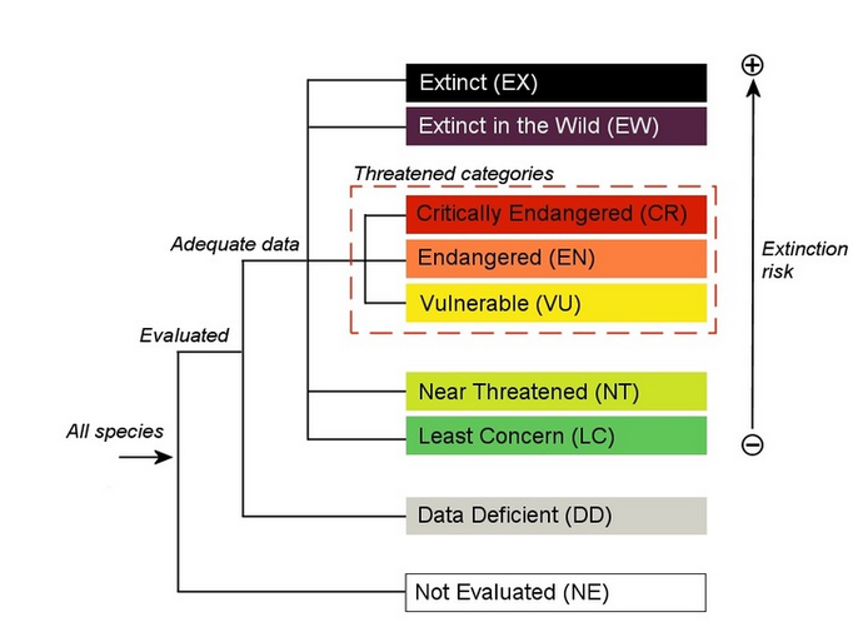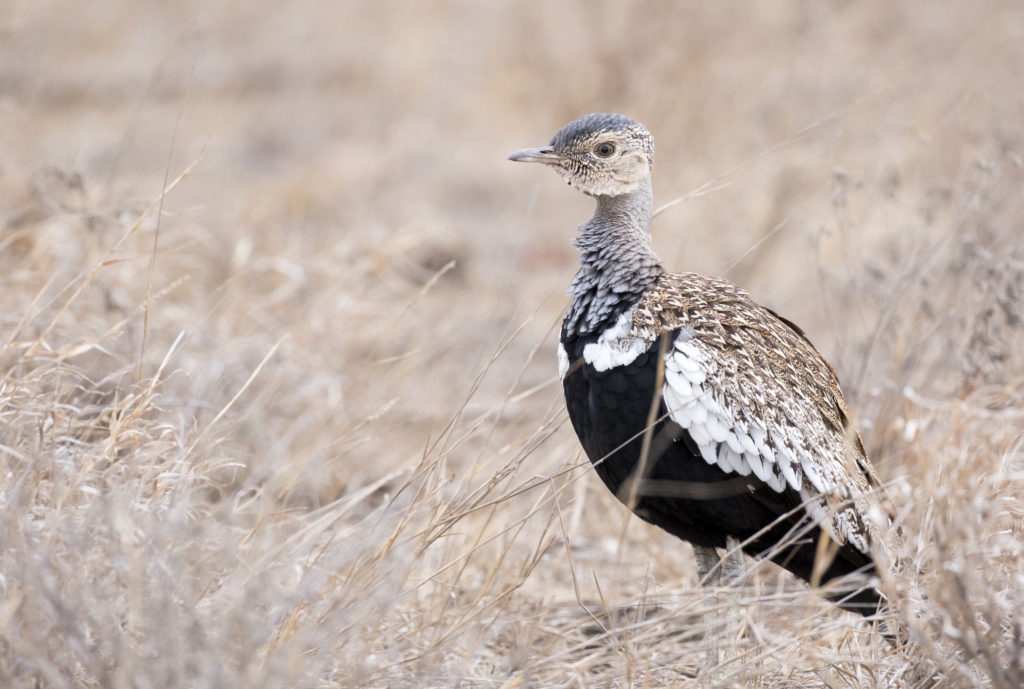
Facing an escalating biodiversity crisis, characterized by the daunting threat of the sixth mass extinction driven by human activities, the importance of safeguarding our planet’s biodiversity has never been more urgent. To grasp the seriousness of the situation, consider this: the species extinction rate is currently 100 to 1000 higher than the normally recorded extinction rate on a geological timescale.
To keep track of this extinction, since 1964, the International Union for Conservation of Nature (IUCN) assesses the conservation statues of species worldwide through its Red List of Threatened Species, thanks to the 9,500 volunteer experts of their Species Survival Commission. But how exactly does this Red List work?
At its core, the IUNC’s Red List of Threatened Species is an online public database that serves as an indicator of the health of the world’s biodiversity. By evaluating the global extinction risk status of animals, fungi and plants, it provides insightful information about range, population size, habitat, threats, and conservation actions. This wealth of information allows governmental bodies, non-profit organizations, businesses, and individuals to make informed conservation decisions.
One of the hallmark features of the IUCN Red List is the Red List Index (RLI), a powerful metric used by governments to track their progress towards reducing biodiversity loss. Used to monitor the United Nations Sustainable Development Goal 15 – Life on Land, the RLI shows trends in the overall extinction risk of groups of species.

To date, over 157,190 species have been assessed, of which 44,016 of them are threatened species, including 41% of amphibians, 37% of sharks and rays, 36% of reef building corals, 34% of conifers, 26% of mammals and 12% of birds.
The IUCN Red List evaluates how close a species is to becoming extinct. Specifically, species are classified into nine distinct categories:

Updated a few times per year, risk assessment is based on the screening of five criteria by experts, relying on robust scientific data. It is regularly updated, and the criteria rely on different biological factors such as population size, extinction rate, geographical range, and fragmentation of the populations.
Species in the Vulnerable (VU), Endangered (EN) and Critically Endangered (CR) categories are described as “threatened”.
Along with assessing the risk of species becoming globally extinct, some assessments have been done at regional and national levels, where conservation policy is often implemented. Not every assessment is published, nor easy to access:


When assessed, the status of a species can differ according to the assessment scale. At a local scale, conservation goals regarding a determined species might be stronger than at a global scale.
The IUCN Red List allows to answer questions such as:
What it does not answer is if a species is effectively present a specific area. This is because range is defined by:
At hummingbirds, the screening of potential presence of a threatened species is crucial during the early stage in project design and development. Thanks to biodiversity surveys, we can effectively assess the baseline data before the project starts, which might confirm the effective presence of threatened species. Initial surveys will also provide a comparative baseline to follow the evolution of the biodiversity in the project area. Indeed, with good ecosystem management, species might come colonize the project area. By integrating biodiversity surveys, we strive not only to mitigate threats to threatened species but also to foster resilient ecosystems capable of supporting diverse flora and fauna.
In conclusion, despite the daunting proportion of threatened species, we are collectively working to reverse or halt biodiversity loss. Initiatives like the IUCN Red List play a vital role in not only helping to identify those species in need of targeted recovery efforts, but also in focusing the conservation agenda by identifying the key sites and habitats that need to be protected!
By prioritizing targeted conservation efforts and preserving vital habitats, we can collectively re-direct our path towards a more sustainable and biodiverse future.
Conservation action works, let us strive for it!